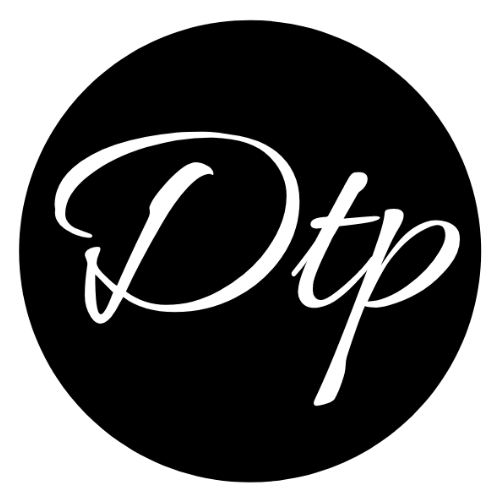DSST Organizational Behavior Study Guide
- DTP Success Team

- Feb 26, 2022
- 4 min read
Updated: Feb 14, 2024
DSST Organizational Behavior Exam Outline
Are you gearing up to tackle the DSST Organizational Behavior Exam?
Look no further! This study guide is your comprehensive resource to help you prepare effectively.
The DSST Organizational Behavior Exam is a two-hour test comprising 100 questions.
It evaluates your understanding of critical topics in organizational behavior, including organizational theory, design, change management, conflict resolution, communication, teamwork, and leadership.
By familiarizing yourself with the exam's content and structure outlined in this guide, you'll be better equipped to excel on test day.
Let's dive into the details and get you on track to achieve your desired score!
Best of luck with your exam preparation journey!
Table of Contents
1. Organization Behavior Overview

The Field of Organizational Behavior
Organizational Behavior is an interdisciplinary field that draws from various disciplines, such as sociology, psychology, communication, and management.
The Study of Organizational Behavior
Organizational Behavior involves examining individuals and their behavior within the context of an organization, specifically in a workplace setting.
DSST Organizational Behavior Trivia Question # 150
2. Individual Processes and Characteristics

Perpetual Processes
People's physical, emotional, attitude, and personality traits vary due to genetic and environmental influences.
Two siblings raised in the same environment may have different attitudes and personalities.
Personality
Personality is the unique set of characteristics that define an individual and influence their behavior.
For instance, someone with a Type A personality may be more competitive and time-conscious than someone with a Type B personality.
Attitudes
Attitudes are enduring evaluations or feelings toward people, objects, or ideas.
Someone may have a positive attitude toward teamwork, which influences their behavior in group settings.
Learning Process
Learning involves acquiring new knowledge or skills through experiences.
For example, a salesperson may learn to use persuasive language through trial and error (operant conditioning).
Motivation
Motivation is the drive or desire that energizes behavior toward a goal.
An employee may be motivated to work hard to receive a promotion (extrinsic motivation) or to feel a sense of accomplishment (intrinsic motivation).
Work Stress and the Individual
Work-related stress can result from workload, job insecurity, or conflict.
An individual may experience stress due to a tight deadline, leading to physical or emotional strain.
3. Interpersonal and Group Processes

Group Dynamics
Group dynamics refers to how group members interact and behave, particularly when they share a common goal.
For instance, a sports team working together to win a game demonstrates group dynamics.
Group Behavior and Conflict
Group behavior involves how group members interact, communicate, and influence each other.
Conflict can arise from differences in opinion, goals, or personalities within a group.
For example, a project team may experience conflict when deciding on project priorities.
Leadership
Leadership is the ability of an individual to inspire and guide others toward a common goal. Influential leaders motivate and empower their team members.
An example is a manager who leads a team to achieve sales targets through clear communication and support.
Power and Politics
Power refers to the ability of individuals or groups to influence others and achieve their goals.
Politics involves using power to gain an advantage within an organization.
A CEO may use their power to influence board decisions or promote organizational changes.
Communication Processes
Communication involves transmitting information from a sender to a receiver through a channel.
Effective communication requires clarity and understanding.
An example is a team meeting where a project manager communicates project updates to team members.
4. Organizational Processes and Characteristics

Organizational Decision-Making
Organizational decision-making involves selecting the best course of action from various alternatives.
This can include deciding whether to launch a new product, enter a new market, or restructure the organization.
For example, a company's leadership team may invest in new technology to improve efficiency.
Organizational Structure
Organizational structure refers to how roles, responsibilities, and authority are divided and coordinated within an organization.
It determines how information flows between levels of management and employees.
For instance, a hierarchical structure has clear lines of authority, while a flat structure encourages more autonomy among employees.
Organization Design
Organization design is aligning an organization's structure with its objectives.
It involves designing the roles, responsibilities, and relationships that make up the organization.
An example is a company restructuring its departments to improve collaboration and efficiency.
DSST Organizational Behavior Trivia Question # 285
5. Change and Development Processes

Basic Processes and Concepts of Change
This refers to understanding the current state of the organization and the essential processes needed to change its behavior.
It involves identifying areas for improvement and implementing strategies to drive change.
An organization might thoroughly analyze its operations to identify inefficiencies before implementing new processes.
Applications and Techniques of Change and Development
This involves applying strategies to facilitate change and development within the organization.
It includes methods for improving relationships, enhancing productivity, and fostering innovation.
A company might use team-building exercises to improve employee collaboration and drive innovation.
6. Conclusion

DSST Organizational Behavior
We trust that this DSST Organizational Behavior exam overview has been beneficial.
Don't forget that our online prep course provides practice questions and course modules tailored to assist you in your exam preparation.
Best of luck with your exam!





Comments